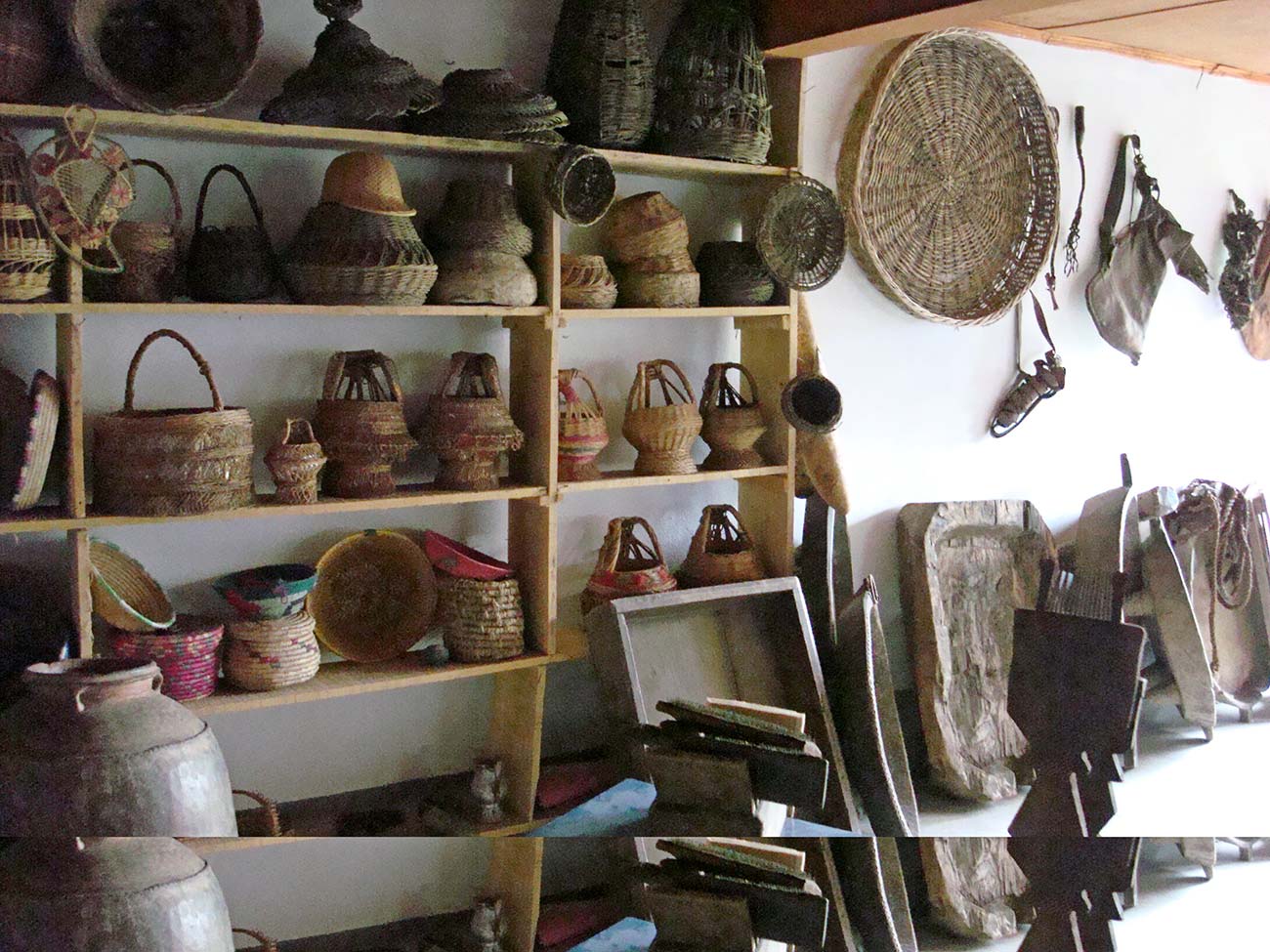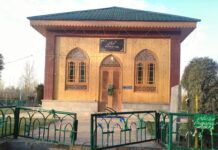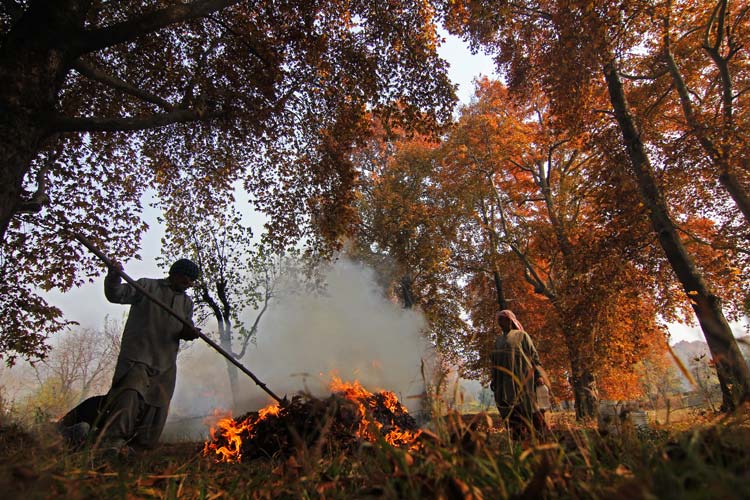In Kashmir’s new digital divide era, J&K’s Department Of Culture surprises everybody by coming up with a wall calendar that brings state’s 12 priceless artefacts to people’s living rooms by rediscovering cultural roots, reports Tabish Rafiq Mir

Over the endless passage of time, syncretism has been the living grace of generations of cultures and civilisations which have inhabited Kashmir. From Hinduism to Buddhism to Sufi Islam, the land has always bred and given rise to tolerance within diverse ideas of philosophy, theology and wisdom, intertwined, more often than most, with indigenous art, literature, philosophy, poetry and music. Tracing the nostalgic memories over the modern history and into the land of the ancient and primitive art, the department of culture in the state has brought to life a collection of shards of the heritage that have resisted the weary landscapes of time over centuries. With each page turned, one travels into the past one step at a time.

RISHI NAMA
The Rishi order of Kashmir is a Sufi tradition associated with religious harmony. Many of the saints held dear by Kashmiris to this day were Sufi Rishis. The original Rishis include Sheikh Noor-ud-din Wali also known as Nund Rishi, Resh Mir Sàeb.
One of the earliest poets in Persian language Mulla Baha-ud-din, produced a Khamsa comprising the Rishi Nama. Rishi Nama was the formal treatise by Baha-ud-din on the Kashmiri Rishi movement, which was “an indigenous Sufi order that celebrates the pursuit of self-discovery”. The Khamsa (meaning literary five) is a palm-shaped amulet.

SHARDA SCRIPT
Sharada/Sharda/Sarda is another name given to Saraswati, the Hindu goddess of knowledge and learning. Believed by some ideologists to be the original centre of the Sharada script, Kashmir is also known as the Sharada Peetha, a famous seat for learning.
Believed to be the land of the goddess herself, Kashmir is sometimes referred to as Sharada Kshetra.
The language has prevailed between the 8th and the 10th Century AD and is a western variant of the Gupta script, which evolved into the Sharada script. The same was morphed into Kashmiri later in the 14th century AD.
It is an abugida system of writing of the Brahmnic family of scripts, which was later used to create Sanskrit and Kashmiri.
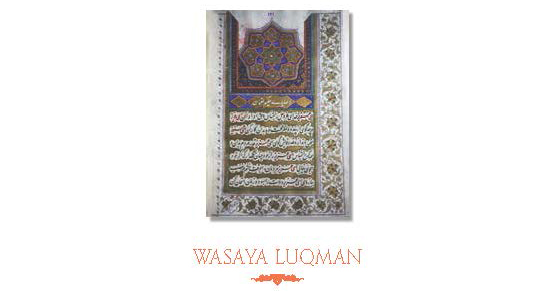
WASAYA LUQMAN
Luqman-al-Hakeem was a wise man after whom the thirty-first Surah of the Qur’an Sharif has been named.
History remembers Luqman as a person who used to immerse himself in everything around him, reading the lives and flights of animals and birds. It is believed that once while sleeping under a tree, Luqman had been visited by an angel and asked to choose between being a king or a wise man. He had chosen the latter and had seen the world under a different light after that.
He was consulted by many people for advice, and the fame of his wisdom was widely known.
Luqman’s Wasaya or advice is artfully written in calligraphic on cloth in this archaic record.
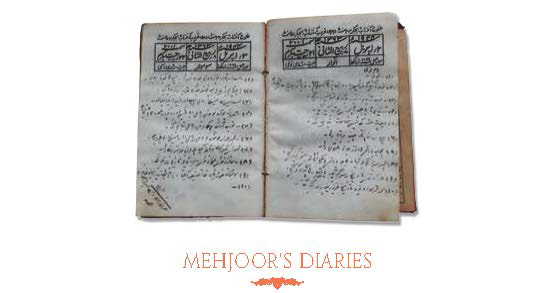
MEHJOOR’S DIARIES
Born in the later part of the 19th century, Peerzada Ghulam Ahmed used to write in Kashmiri, Persian, and Urdu. Known by his pen name Mahjoor, he used to write about freedom and progression in Kashmir, depicting and mirroring the times he was living in. His popular verses engaged such topics as love, communal harmony, social reform, and the plight of the Kashmiris.
He had a habit of maintaining a journal, and used to fill it up with everything that happened in his life. The handwritten diary, which is preserved to this day, has elaborate records of his life, both social and personal.
Every time Mahjoor used to meet someone, he used to cherish the moments by writing in his diary, the details about the meeting and the conversations with the person.
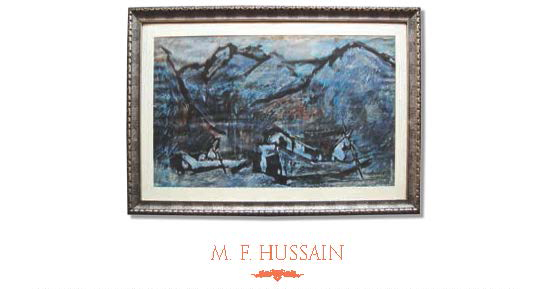
M F HUSSAIN
Frequenting the vale for art and peace till 1980, M F Hussain used to visit Kashmir to promote his art and draw inspiration from the nature he was embraced by. He would mentor students and encourage them to give importance to art.
It is said that he used to walk barefoot on the Residency Road, and top it up with a cup of tea or coffee with some of his close friends.
Hussain’s art reflects the contemporary rural and urban life, throwing light on the unnoticed orthodoxies of human nature. His style comprised of Cubism and Expressionism, which took the 20th century Indian art by storm.
When he visited Kashmir once in 1960, he painted the Dal Lake, in the lap of the great Zabarwan. In 1966, he painted the famous Kashmiri couple.
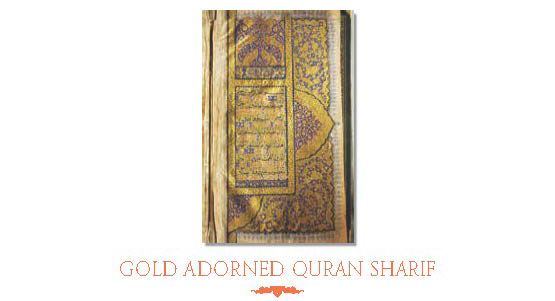
GOLD ADORNED QURAN SHARIF
Rare and ornamented manuscripts of the Quran Sharif have gone hand in hand with the Kashmiri history ever since Islam managed to seep into the fabric of the Kashmiri society.
Written with an ink which is a blend of saffron and gold, another copy from 1594 AD is yet another masterpiece which has still been preserved despite the passing of time and historic circumstance.
This copy from 1711 AD is a calligraphic manuscript, bound with a Papier Mache cover. The book is gold-plated. It has been shown at countless exhibitions, as a bearer of art and history and an amalgamation of religion, art, and culture.
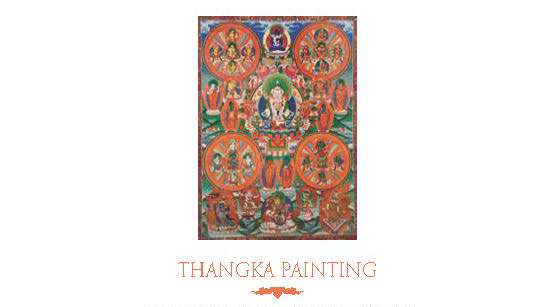
THANGKA PAINTING
Usually depicting a Buddhist deity, a scene or a mandala, Thangka is a Tibetan Buddhist painting done on cotton or silk, and is the ubiquitous Buddhist art which requires intricate details and finery, patience and undivided meditative attention. It is rolled up traditionally into a scroll, and not framed. To avoid ruining the cloth due to moisture, it is stored in dry places, allowing it to sustain for long periods of time, usually centuries.
Each Thangka tells a tale, and is a representation of the mythical ideology of the times.
This Thangka is the work of Tsering Wangdu, a Padma Shree awardee, a well-known teacher and healer. He spends part of each year in Portland, Oregon, USA teaching and leading retreats and the rest of the year training monastics at Pal Gyi Ling in Nepal.
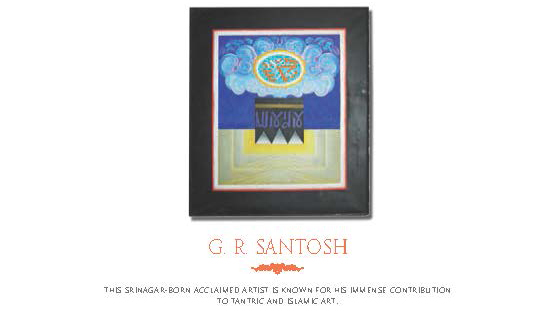
G R SANTOSH
Born in 1929, Ghulam Rasool Santosh was a Srinagar born artist. His art was a reflection of his personal and professional life, which was an epitome of cultural and religious tolerance. Contrary to the times, he married a Kashmiri Pandit woman Santosh and even kept her name later.
He dwelled in Tantric and Islamic art throughout his life. His art was inspired by Islam and Kashmir Shaivism. His style was modern and minimalistic. His paintings are known for the vibrancy of colours, neat lines, spiritual energy and sensuousness.
He used to write plays, poetry, and essays in Kashmiri.

MAHABHARATA IN KASHMIRI
According to the Mahabaratha, the Kambojas ruled Kashmir during the epic period with a Republican system of government from the then capital city of modern Rajauri.
Ancient mythology boasts that Kashmir was once a great lake, which was drained by the Great Rishi or sage Kashyapa. The name “Kashmir” is believed by some to have been originally derived from “Kashyapa Mir”.
Over the centuries, many people, Hindu and Muslim, have written Hindu scriptures in Kashmiri. This one dates to the early 20th Century and is a work of Pandit Sona Ram Raina of the Gooso Village in Pulwama.
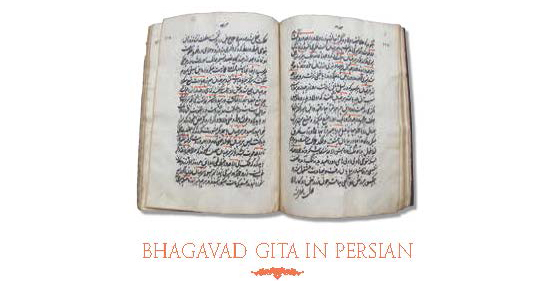
BHAGVAD GITA IN PERSIAN
Scholars since the medieval times have translated the Bhagvad Gita into Persian. Syed Hassan Kashmiri translated Gita into Persian too.
The text in the picture is believed to be Lord Krishna’s sermon to Arjun in the battle of Kurukshetra, an excerpt from the holy book, and has been written in a Kashmiri-style calligraphy inscribed on Koshur paper.

NUSHKA E FATEULLAH
The oldest copy of the Quran Sharif in Kashmir can be traced back to 1237 AD.
Kashmir’s Islamic scholar of the archaic times, Fateh Ullah Kashmiri, composed this copy in his times. The entire manuscript contains Persian translations of the holy verses.
This particular copy predates the formal arrival of Islam in Kashmir by 83 years, further legitimising the fact that Islam had arrived in Kashmir a long time before the establishment of a political power.

KHAT E NAKHUN
Written with the nail of the right hand, presumably with that of the thumb, this manuscript of the Persian language claims an exotic place in a land of art.
The script is embossed; the engravings having been done on the back of the paper; and in reverse.
The margin of the manuscript is decorated with illustrations of men, women, animals and beasts and the entire inscription is calligraphic.
-All pictures by Mehraj Bhat


